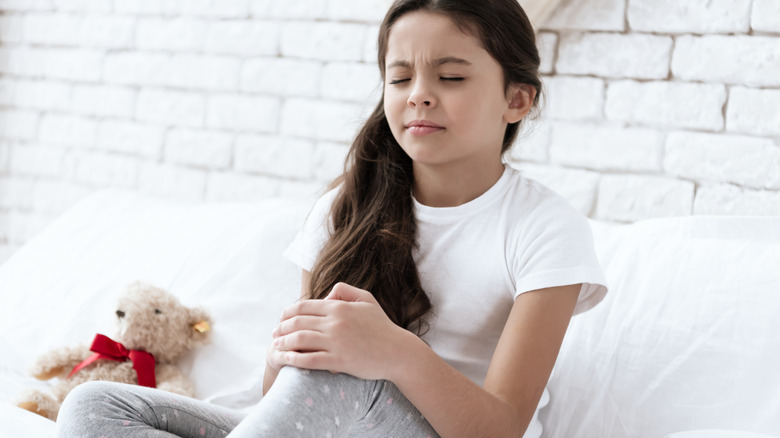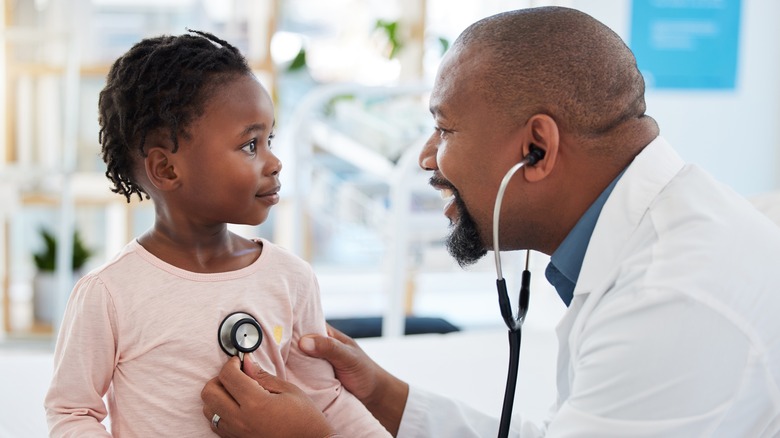Are Growing Pains A Real Thing?
Growing up is rife with enough trials and tribulations as it is. In the midst of numerous emotional challenges, such as navigating social relationships and learning about the world around us, the addition of physical growing pains during this time can be all the more distressing.
Usually occurring in the lower extremities — including the thighs, shins, calves, or behind the knees — growing pains primarily affect children between the ages of 3 and 12 (via Cleveland Clinic). Most often, symptoms involve a painful aching or cramping sensation in the legs. While some children may only experience mild discomfort, the pain may be more severe for others. Growing pains may occur sporadically or on a more regular basis, but are most commonly experienced in the evening time or during the hours of the night.
As unsettling as the experience can be, is it really our physical growth that's responsible for these aches and pains in childhood?
Growing pains may be related to strain from exercise
While you'll often hear caregivers say "They grow up so fast," it's not actually growth that's responsible for growing pains. "There is no scientific proof that growing pains are truly caused by rapid bone, muscle or ligament growth," Dr. Marnie Baker, a California-based pediatrician at Saddleback Medical Center, told MemorialCare.
Rather, experts say it's more likely that growing pains are a result of the heightened energy and increased exercise many children engage in during their younger years, particularly older kids. "It's important to remember that kids are very active and some aches and pains are normal, especially if they play a lot of sports," Dr. Karen Onel, Chief of Pediatric Rheumatology at the Hospital for Special Surgery explained. "If a child is playing soccer 12 hours a week or taking ballet lessons and dancing 15 hours a week, some soreness may be expected."
However, exercise may not be the only potential cause of a child's growing pains. Some research suggests that children susceptible to growing pains also tend to be susceptible to other types of pain too, such as stomach pain, indicating that some kids may have a lower pain tolerance than others (via Cleveland Clinic). Alternatively, children with flat feet or hyper-flexible joints may also be more prone to experiencing growing pains.
How to alleviate the discomfort of growing pains
So how can you be sure if a child is experiencing growing pains or something else entirely? Generally speaking, growing pains will not be isolated to one singular spot. Instead, for instance, they will be present in both knees or both calves. Furthermore, growing pains are not accompanied by additional symptoms. Meaning, if a child experiences growing pains alongside limping, redness, swelling, or warmth around the affected area, it's best to see a doctor, as this could indicate an alternate health condition.
Although there is no formal diagnostic test or treatment method for growing pains, there are ways in which caregivers can help relieve a child's discomfort. Light massage or placing a heating pad on the painful areas may alleviate symptoms, according to experts at the Cleveland Clinic. Some gentle stretching may also be helpful. Alternatively, the use of over-the-counter medications such as Tylenol, Advil, or Aleve may be suggested by your pediatrician. Additionally, while in some cases physical activity may be the source of a child's soreness, others may find symptom relief by engaging in more regular exercise.



